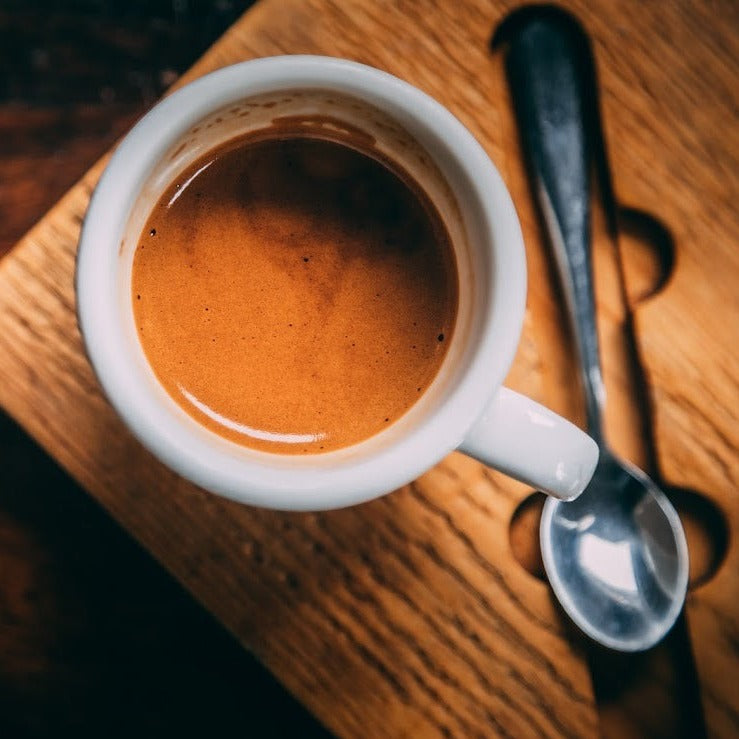Discovering the Origins Behind Top-Tier SOE Single Origin Espresso
Discovering the Origins Behind Top-Tier SOE Single Origin Espresso
Blog Article
Discovering the Rich Flavors of Coffee Beans: a Deep Study Espresso and Blended Coffee Beans
When you discover the rich flavors of coffee beans, you discover a complex world where each selection brings its own character to your cup. Recognizing the beginnings, refining techniques, and toasting techniques can change your coffee experience. As you browse via the art of coffee and the creativity behind combined coffees, you'll start to appreciate the subtleties that make each sip one-of-a-kind. What you'll find following could transform the way you appreciate your early morning brew.
The Origins of Coffee Beans: Exploring Terroir and Taste Profiles
When you take a sip of coffee, you're not just delighting in a beverage; you're experiencing an abundant tapestry of flavors shaped by the beans' origins. Each area produces special taste accounts affected by dirt, elevation, and environment. For example, beans from Ethiopia typically burst with bright, fruity notes, while those from Colombia tend to provide a balanced, nutty sweet taste.
As you discover different beginnings, you'll discover how terroir-- the ecological elements influencing a crop-- plays an essential role - Single Origin Espresso. The same coffee variety can taste significantly different depending on where it's grown
When you think about these elements, you begin to value the complexity behind your mug. Each sip tells a story of the land and the farmers that supported the beans. Following time you indulge, assume concerning the trip your coffee took prior to it reached your hands, and enjoy those elaborate flavors that show its origin.
Comprehending Espresso: The Art and Science Behind the Mixture
When you think of espresso, it's not practically the solid flavor; it's additionally regarding the strategies that bring it to life. Understanding how different preparation approaches impact taste can transform your developing experience. Allow's check out the details of coffee preparation and reveal the one-of-a-kind flavor profiles that make each mug unique.
Coffee Preparation Techniques
Coffee prep work is both a scientific research and an art, combining accurate methods with a deep understanding of coffee. To start, you'll desire to pick high-quality, newly baked beans and grind them carefully for optimal removal (Single Origin Espresso). The work dimension is essential; as well coarse, and your espresso will be weak, also fine, and it'll be bitter
The result needs to be a rich, velvety espresso with an attractive layer of crema on top. With method, you'll master these methods.
Taste Profiles Described
The globe of espresso provides an abundant tapestry of flavor accounts that can elevate your coffee experience. Light roasts commonly showcase bright acidity and vivid tastes, while dark roasts existing much deeper, bolder tones.
Recognizing these accounts aids you choose the best espresso for your taste buds. Trying out various blends can disclose surprising combinations. A well-crafted blend could balance the bright notes of an Ethiopian bean with the abundant, chocolatey touches of a Brazilian bean. Embrace the trip of uncovering coffee's diverse tastes, and you'll change your coffee ritual into an amazing journey.
Handling Methods: Exactly How They Impact Flavor and Fragrance
While it could appear that the origin of coffee beans is the most significant factor in establishing their taste and scent, the processing approaches used post-harvest play an equally necessary role. You'll locate that these techniques can dramatically change the final preference account of your mug.
As an example, the washed process gets rid of the fruit from the beans before fermentation, frequently resulting in a cleaner, brighter taste. On the other hand, the natural procedure leaves the fruit intact during drying, causing a sweeter, fruitier account.
Various other techniques, like honey processing, strike an equilibrium, enabling some fruit mucilage to stay, giving an one-of-a-kind complexity.
Each processing method communicates with the beans' integral characteristics, boosting or silencing certain tastes and scents. So, when you sip that espresso or combined coffee, bear in mind that the trip from cherry to mug is influenced not simply by origin however likewise by exactly how those beans were refined.
Toasting Strategies: Unlocking the Full Possible of Coffee Beans
Roasting methods are vital for revealing the full possibility of coffee beans, as they change raw, green beans right into the fragrant, savory coffee you appreciate. The choice of toasting technique-- light, medium, or dark-- drastically influences taste profiles. Light roasts maintain the beans' natural acidity and fruity notes, while tool roasts balance sweet taste and splendor. Dark roasts, on the other hand, highlight bold, smoky flavors.
A slower roast at lower temperature levels permits for intricate tastes to establish, while a Single Origin Espresso quicker roast can magnify anger. By grasping these methods, you'll expose a globe of taste, raising your coffee experience to new elevations.
The Magic of Blended Coffee: Developing Unique Flavor Experiences
Creating an unique taste experience with blended coffee can transform your early morning routine right into an exploration of taste. By incorporating different beans from different regions, you can expose a harmony of flavors that elevate your mug to brand-new elevations. Each mix deals an unique profile, stabilizing acidity, body, and sweet taste to create something really special.
When you pick a blend, you're not simply choosing a coffee; you're picking a trip across diverse landscapes and cultures. Try out various mixes enables you to find your individual favorites, whether you take pleasure in fruity notes or abundant, chocolatey touches.

Tasting Notes: Recognizing the Nuances in Your Mug
As you drink your coffee, you might notice a spectrum of tastes dancing on your taste, each revealing the complexities of the beans. You may taste the brilliant acidity evocative citrus or the deep, rich notes similar to dark delicious chocolate. The sweetness could stimulate honey or caramel, balancing the general account wonderfully.
Take notice of the body of the coffee-- does it feel light and airy, or is it complete and velvety? The coating, also, provides hints; a lingering aftertaste might hint at nuttiness or floral touches.

Do not forget to discover the special attributes of different origins, as each region presents distinctive tastes - Single Origin Espresso. Ethiopian coffees frequently present fruity notes, while Colombian beans could display an extra rounded sweetness. By recognizing these nuances, you'll deepen your admiration for each and every cup, elevating your coffee experience to brand-new elevations

Developing Methods: Making The Most Of Flavor Extraction for each Bean
When you check out the various developing approaches, you'll uncover that each technique can dramatically impact the flavor profile of your coffee. From French press to pour-over, each method removes different compounds, enhancing or silencing details notes. For instance, using a French press permits oils to remain in the mixture, producing a richer taste, while pour-over emphasizes clarity and illumination.
Temperature and grind size additionally play essential duties. A coarser work works best for chilly mixtures, while a great grind is excellent for espresso. Trying out water temperature level-- in between 195 ° F and 205 ° F-- can expose covert tastes, too.
Do not ignore steeping time; a fast removal can result in sour notes, while over-extraction might generate bitterness. By readjusting these variables, you can take full advantage of flavor extraction and absolutely boost your coffee experience. Enjoy the journey of uncovering what method ideal fits your taste buds!
Frequently Asked Questions
What Is the Ideal Water Temperature Level for Brewing Coffee?
The perfect water temperature level for brewing coffee's between 195 ° F and 205 ° F. If you make use of water that's too hot, you'll over-extract flavors; also cool, and you won't draw out sufficient. Go for that pleasant place for the ideal brew!
Just How Does Work Size Influence Coffee Taste?
Work dimension substantially impacts coffee taste. Better grinds remove more tastes and oils, leading to a bolder taste, while coarser grinds return a lighter taste. Readjusting grind size aids you accomplish your desired coffee account.
Exist Health And Wellness Perks Related To Alcohol Consumption Coffee?

What Is the Difference Between Arabica and Robusta Beans?
Arabica beans are smoother and sweeter, often featuring fruity flavors, while robusta beans are more powerful with a bitter preference and higher high levels of caffeine material. You'll discover these distinctions in fragrance and brewing experience.
Exactly How Can I Store Coffee Beans for Quality?
To store coffee beans for quality, maintain them in an airtight container, away from light, moisture, and warm. You'll maintain their taste longer if you just grind what you need right before brewing.
Checking Out the Abundant Flavors of Coffee Beans: a Deep Dive Into Espresso and Blended Coffee Beans.
When you check out the abundant tastes of coffee beans, you reveal a complex globe where each selection brings its very own personality to your mug.When you take a sip of coffee, you're not just taking pleasure in a beverage; you're experiencing an abundant tapestry of flavors shaped by the beans' origins.Roasting techniques are essential for exposing the full capacity of coffee beans, as they transform raw, eco-friendly beans into the aromatic, savory coffee you take pleasure in.As you sip your coffee, you might discover a spectrum of flavors dancing on your palate, each exposing the intricacies of the beans.
Report this page